For all of the talk I do about social, marketing, and legacy, what gets passed over is the fact that I’m a salesman at heart. Before WLTV, before VaynerMedia, before
VaynerRSE, I developed my chops and my fortune by selling stuff.
With that in mind, I’m putting out a series of pieces about sales. From my personal experiences, to “what it means to be a salesperson.” It’s something that’s really important to me, and I want to speak more about it.
Read more:
—
Pt. 1: Selling Wine
By the time I started working at my family liquor store at the age of 15 I already had a (crazy) 10 years of sales experience under my belt. A lot of people have asked me who I learned from, or where I picked up my technique, but the truth is that I was very independent about it.
I spent very little time studying what other people on the floor were doing or patterning any of my behaviors off of them. At that point I had over 50 baseball card shows under my belt, and I already thought I was a better salesman than anybody in the store.
That said, I did my homework. I’d read the back of the wine bottles and the display signs. Maybe I’d ask Dick (our head wine guy) some questions. I also spent a lot of time educating myself with industry publications like Wine Spectator. For me it was no different than reading the Beckett baseball card price guide.
I’d pay a lot of attention to how customers would sell the wine to each other. They were really good at it, too. People are more attracted to advice from someone who doesn’t have a vested interest in selling something to them, and I realized that authenticity had a lot of value. I can even remember imagining ways to come up with fake customers and take advantage of it (for the record, I never pulled that one off).
I think I’m a great salesman because I listen.
It’s behavioral. I’m hunting. I pay attention to what people do and look for patterns. I think of conversion in an emotional more than an analytical way. My style was always to ask questions:
“Hey can I help you?”
“Yeah I’m looking for some wine for a party”
I’d never just respond with a recommendation, I’d keep asking questions. I think it’s the same reason I do well on Twitter. “What kind of party are you having? Is it your boss, or someone you’re trying to impress? Because then maybe we should go in the direction of a name brand. Oh it’s just your buddies coming over for the NFL draft who only drink beer and don’t know the difference? Here’s an $8 wine that acts like a $15 wine.”
And, of course, I was hyper, so I’d speak quickly and throw out four different scenarios in a two second period. “For a party? For a boss? For Friends? For a date?”
I wasn’t asking questions in order to get permission to talk. If I wanted to talk, I would just steamroll you. The questions were there to reverse-engineer your needs and provide the insight that I could deliver on.
Here is what’s fascinating about selling wine:
1. People are intimidated by it.
2. It’s all based on stories.
3. It’s a commodity.
Sure some Pinot Noirs are better than others, but in all honesty there are very few people who can taste the difference. So now you’re in full storytelling mode. Now you’re playing on the emotions, and the stories of the vineyards and the winemakers.
As an artist — and that’s what I consider myself as a salesman — it offered me a wide canvas to paint on. The only things I really had to navigate were the ratings by the the big reviewers, but outside of that, I had free reign, so I painted a lot of pictures.



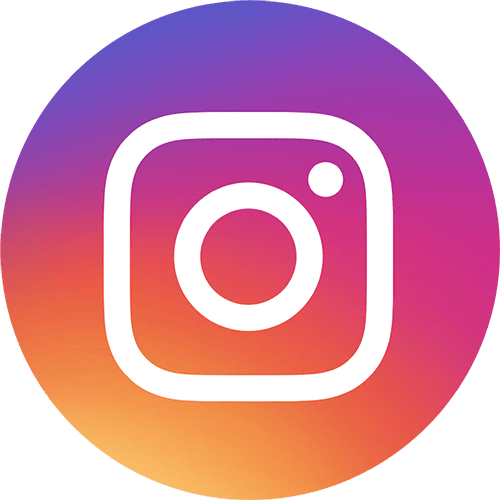

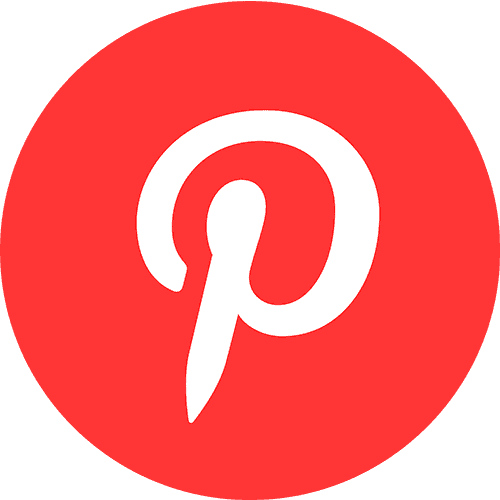


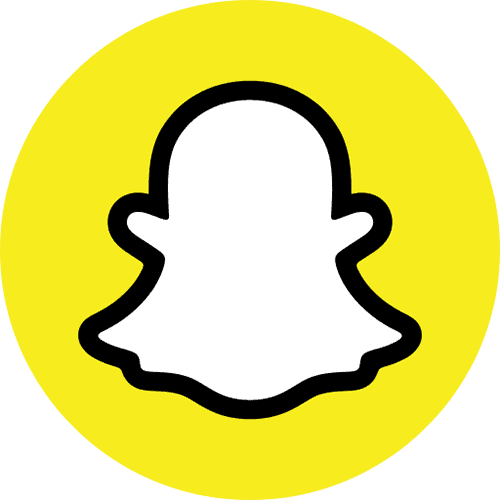
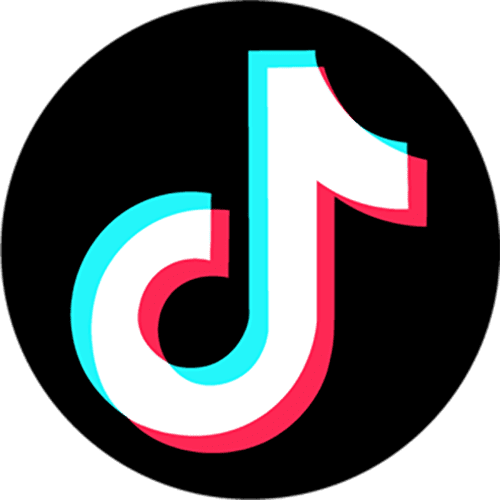
pin up az: pin up – pin up az
пин ап казино: пинап казино – pin up зеркало
пин ап вход pin up пин ап казино вход
пин ап вход: пин ап зеркало – пин ап казино вход
пинап кз пин ап казино пин ап казино
https://zithromax.company/# zithromax generic cost
https://gabapentin.auction/# buy gabapentin
generic amoxil 500 mg amoxicillin cheapest price amoxicillin online no prescription
http://semaglutide.win/# Rybelsus 14 mg price
https://semaglutide.win/# order Rybelsus for weight loss
https://gabapentin.auction/# neurontin 150mg
can you buy amoxicillin uk amoxicillin cheapest price amoxicillin 875 125 mg tab
https://amoxil.llc/# amoxicillin 500mg without prescription
where can you buy zithromax
buy rybelsus rybelsus Semaglutide pharmacy price
http://semaglutide.win/# Rybelsus 7mg
https://semaglutide.win/# Buy semaglutide pills
http://semaglutide.win/# rybelsus
zithromax capsules australia
buy semaglutide online rybelsus price Semaglutide pharmacy price
http://gabapentin.auction/# neurontin 100mg
https://stromectol.agency/# buy minocycline 100 mg
https://stromectol.agency/# stromectol price uk
where can you buy zithromax
buy amoxicillin 500mg online amoxil best price amoxicillin for sale online
http://amoxil.llc/# buy cheap amoxicillin online
https://zithromax.company/# generic zithromax india
generic zithromax online paypal
Rybelsus 14 mg price cheap Rybelsus 14 mg cheap Rybelsus 14 mg
http://stromectol.agency/# buy minocycline 100mg for humans
http://stromectol.agency/# stromectol for sale
https://semaglutide.win/# Semaglutide pharmacy price
zithromax prescription in canada
ivermectin cream 1 cheapest stromectol ivermectin 1%
https://gabapentin.auction/# purchase neurontin canada
https://gabapentin.auction/# neurontin 600 mg pill
https://stromectol.agency/# ivermectin 0.1 uk
buy zithromax 1000mg online
https://gabapentin.auction/# neurontin 30 mg
ivermectin eye drops buy minocycline 100mg otc stromectol canada
https://gabapentin.auction/# 600 mg neurontin tablets
zithromax 500 mg lowest price drugstore online generic zithromax buy zithromax canada
http://stromectol.agency/# minocycline cost
generic zithromax azithromycin
rybelsus generic buy rybelsus Buy semaglutide pills
http://stromectol.agency/# minocycline capsule
zithromax purchase online
https://amoxil.llc/# amoxicillin tablets in india
minocycline for rheumatoid arthritis order stromectol cheap stromectol
https://amoxil.llc/# amoxicillin order online no prescription
buy zithromax 1000 mg online
cheap Rybelsus 14 mg rybelsus generic rybelsus price
https://gabapentin.auction/# neurontin 300mg caps
http://semaglutide.win/# buy rybelsus
where can i buy zithromax medicine
https://drugs24.pro/# online canadian drugstore
indian pharmacies safe
buying prescription drugs in mexico: buying prescription drugs in mexico – mexican mail order pharmacies
best india pharmacy top 10 online pharmacy in india top 10 online pharmacy in india
pharmacy drugs http://mexicanpharm24.pro/# mexico drug stores pharmacies
indian pharmacies safe: п»їlegitimate online pharmacies india – п»їlegitimate online pharmacies india
http://drugs24.pro/# natural ed
best online pharmacy india
top online pharmacy india п»їlegitimate online pharmacies india п»їlegitimate online pharmacies india
ed medications over the counter https://indianpharmdelivery.com/# reputable indian online pharmacy
http://indianpharmdelivery.com/# india pharmacy mail order
mail order pharmacy india
canadian online pharmacy canada ed drugs prescription drugs online without
https://mexicanpharm24.pro/# mexico pharmacies prescription drugs
reputable indian pharmacies
indian pharmacy indian pharmacies safe world pharmacy india
impotence pills: buy canadian drugs – prescription drugs online
carprofen without vet prescription canadian medications male dysfunction pills
http://drugs24.pro/# best online canadian pharmacy
indian pharmacy
buy prescription drugs from india http://mexicanpharm24.pro/# п»їbest mexican online pharmacies
online shopping pharmacy india top 10 pharmacies in india india online pharmacy
male ed drugs https://drugs24.pro/# best online pharmacy
cheapest online pharmacy india reputable indian pharmacies indian pharmacy
https://stromectol1st.shop/# ivermectin over the counter
Online medicine order
https://rybelsus.icu/# good price
canadian medications
paxlovid for sale: paxlovid 1st – paxlovid price
paxlovid pharmacy: paxlovid buy – paxlovid for sale
https://paxlovid1st.shop/# paxlovid india
cat antibiotics without pet prescription
http://stromectol1st.shop/# purchase stromectol
top online pharmacy india
ivermectin cream uk: stromectol fast delivery – ivermectin 200mg
Cost of Plavix without insurance: clopidogrel – cheap plavix antiplatelet drug
http://paxlovid1st.shop/# paxlovid india
ed drug comparison
https://rybelsus.icu/# cheaper
treatments for ed
Clopidogrel 75 MG price: check clopidogrel pro – Cost of Plavix without insurance
https://stromectol1st.shop/# minocycline
world pharmacy india
Paxlovid buy online: paxlovid shop – paxlovid india
price of ivermectin: buy online – ivermectin price canada
http://rybelsus.icu/# rybelsus
best ed supplements
buy rybelsus: order Rybelsus – Semaglutide pharmacy price
https://stromectol1st.shop/# ivermectin buy canada
indian pharmacy paypal
http://rybelsus.icu/# Buy semaglutide
new erectile dysfunction treatment
plavix best price: best price on generic – generic plavix
rybelsus: rybelsus generic – cheaper
http://stromectol1st.shop/# buy ivermectin nz
ed solutions
Semaglutide pharmacy price: buy semaglutide online – buy semaglutide online
minocycline topical foam: stromectol 1st – ivermectin 4000 mcg
Plavix 75 mg price: clopidogrel pro – buy Clopidogrel over the counter
https://stromectol1st.shop/# minocycline 50 mg para que sirve
buy prescription drugs from india
paxlovid price: paxlovid price – paxlovid cost without insurance
minocycline 50 mg tablets for humans for sale: best price shop – minocycline 50 mg online
http://stromectol1st.shop/# is minocycline an antibiotic
indian pharmacy paypal
Cost of Plavix on Medicare: best price on generic – п»їplavix generic
rybelsus price: good price – rybelsus.icu
http://stromectol1st.shop/# buy stromectol online uk
п»їlegitimate online pharmacies india
paxlovid pharmacy: best price on pills – paxlovid for sale
http://1winindia.tech/# pin up
пин ап казино
пин ап вход: пин ап официальный сайт – пин ап вход
пинап зеркало: пин ап вход – пин ап вход
пинап кз пинап казино пинап казино
canl? casino: casino oyunlar? – casino sitesi
pin up kz: пинап казино – пин ап кз
пин ап: пинап зеркало – пин ап зеркало
1xbet официальный сайт: 1xbet официальный сайт – 1xbet официальный сайт
1xbet: 1xbet скачать – 1хбет
pin-up casino giris pin up azerbaycan pin up 306
guvenilir casino siteleri: casino oyunlar? – h?zl? casino
pin up: pin-up casino giris – pin up casino
пин ап зеркало: пинап зеркало – пинап зеркало
пин ап: pin up kz – пинап казино
pin up: pin up – pinup az
h?zl? casino: canl? casino – h?zl? casino
en iyi casino siteleri en iyi casino siteleri h?zl? casino
1xbet скачать: 1xbet – 1xbet официальный сайт
pin up casino: pin up 306 – pin-up
pin up azerbaycan: pinup az – pin-up casino giris
pin up пинап казино пинап
пин ап официальный сайт: пин ап – пин ап вход
dunyan?n en iyi casino siteleri: h?zl? casino – guvenilir casino siteleri
пин ап вход: пин ап вход – пин ап официальный сайт
пинап кз: пин ап кз – пинап
https://1winbrasil.win/# pin up azerbaycan
пинап казино
1xbet зеркало: 1хставка – 1хбет
https://1winci.icu/# пинап зеркало
пинап казино
пинап пин ап пин ап казино вход
buy erection pills: ways to treat erectile dysfunction – male erectile dysfunction
http://drugs1st.store/# pumps for ed
pharmacies in mexico that ship to usa: mexico drug stores pharmacies – pharmacies in mexico that ship to usa
https://indianpharm1st.com/# cheapest online pharmacy india
mexican pharmaceuticals online: mexican online pharmacies prescription drugs – mexican online pharmacies prescription drugs
canadian drugs: foods for ed – aspirin and ed
purple pharmacy mexico price list: mexican online pharmacies prescription drugs – buying prescription drugs in mexico
http://indianpharm1st.com/# Online medicine order
online shopping pharmacy india: best india pharmacy – indianpharmacy com
mexican drugstore online: reputable mexican pharmacies online – mexican pharmaceuticals online
https://mexicanpharm1st.com/# mexican border pharmacies shipping to usa
reputable mexican pharmacies online reputable mexican pharmacies online reputable mexican pharmacies online
indian pharmacy paypal: best online pharmacy india – online pharmacy india
canada ed drugs: how to cure ed naturally – ed doctor
http://drugs1st.store/# ed dysfunction treatment
pharmacies in mexico that ship to usa: medication from mexico pharmacy – mexico pharmacies prescription drugs
http://indianpharm1st.com/# india online pharmacy
mexico drug stores pharmacies: mexico drug stores pharmacies – mexican border pharmacies shipping to usa
пин ап зеркало pin up zerkalo пинап казино
https://pinup-az.bid/# pinup
https://pinupzerkalo.fun/# пинко
pinup bet and casino
pinup-az bid: pin up 306 – pinup az
http://pinup-az.bid/# pin up azerbaycan
pin up zerkalo
https://pinupzerkalo.fun/# бонусы пин ап
пинап Пин Ап Казино Официальный Сайт пин ап 634
sweet bonanza: sweet bonanza – sweet bonanza tr
пин ап казино: пин ап казино – пины
https://pinupzerkalo.fun/# пин ап казино
pin up win
Пин Ап Казино Официальный Сайт в России: пин ап зеркало – пинко
пинап казино: pin up kz – пин ап кз
https://pinup-az.bid/# pin-up casino giris
sweet bonanza nas?l oynan?r: sweetbonanzatr.pro – sweet bonanza nas?l oynan?r
http://biznes-fabrika.kz/# пин ап 634
pinup bet and casino
sweet bonanza: sweet bonanza – sweet bonanza
https://biznes-fabrika.kz/# Пин Ап Казино Официальный Сайт
http://pinup-az.bid/# pin up 306
pin up casino
пин ап: пин ап – пин ап казино
пинко: Официальный Сайт – бонусы пин ап
http://biznes-fabrika.kz/# пины
pinup bet and casino
pinco: pin up zerkalo – pinco
http://pinup-az.bid/# pinup az
Пин Ап Казахстан: Пин Ап Казахстан – пин ап казино онлайн
бонусы пин ап: пинап казино – пин ап вход
pinup: pinup az – pinup az
sweet bonanza nas?l oynan?r: sweetbonanzatrpro – sweet bonanza oyna
http://pinupzerkalo.fun/# пин ап вход
see a healthcare provider: see a healthcare provider – See risks
buy amoxil online: cheap – amoxil online
https://stromectol1st.store/# find bets price
paxlovid store: See risks – cheapest paxlovid
https://amoxil1st.shop/# amoxil online
cheapest paxlovid: See risks – paxlovid1st
gabapentin best price: Neurontin online – licensed gabapentin
https://stromectol1st.store/# stromectol store
stromectol: stromectol store – stromectol
Neurontin online: buy gabapentin – licensed gabapentin
https://semaglutide.ink/# Urgent Specialists
http://gabapentin1st.pro/# licensed gabapentin
Urgent Specialists: Urgent Specialists – Urgent Specialists
reputable indian online pharmacy: Indian pharmacy to USA – п»їlegitimate online pharmacies india
mexican pharmaceuticals online Mexican pharmacy ship US purple pharmacy mexico price list
medication from mexico pharmacy: mexican pharmacy – mexico pharmacies prescription drugs
male enhancement pills http://indianpharm24.pro/# world pharmacy india
п»їlegitimate online pharmacies india Indian pharmacy worldwide delivery indian pharmacy
http://mexicanpharm24.cheap/# buying prescription drugs in mexico
best canadian pharmacy online
reputable indian pharmacies: India pharmacy international – india pharmacy mail order
mexico drug stores pharmacies mexican drugs mexico drug stores pharmacies
psychological ed treatment http://pharm24.pro/# real viagra without a doctor prescription usa
medication from mexico pharmacy Mexican pharmacy ship US mexican online pharmacies prescription drugs
ed dysfunction: cheap pharmacy – ed drugs
http://mexicanpharm24.cheap/# mexican pharmaceuticals online
aspirin and ed
best india pharmacy: Best Indian pharmacy – indian pharmacies safe
mexico drug stores pharmacies mexico pharmacy п»їbest mexican online pharmacies
ed meds online pharmacy https://pharm24.pro/# medication for ed
buy medicines online in india indian pharmacy purchase online indian pharmacy
prescription drugs: cheap pharmacy – best way to treat ed
erectile dysfunction remedies http://indianpharm24.pro/# cheapest online pharmacy india
buy prescription drugs from india Pharmacies in India that ship to USA pharmacy website india
cheapest online pharmacy india: India pharmacy international – cheapest online pharmacy india
п»їbest mexican online pharmacies mexico pharmacy cheap pharmacies in mexico that ship to usa
can ed be reversed http://indianpharm24.pro/# Online medicine order
erection pills viagra online low cost prescription meds online without doctor prescription
buying prescription drugs in mexico online: Legit online Mexican pharmacy – mexican online pharmacies prescription drugs
http://pharm24.pro/# how to cure ed
buying pills online
ed treatment pills cheap medication male dysfunction treatment
generic ed drugs: affordable medication – cheap erectile dysfunction pill
best cure for ed http://pharm24.pro/# reasons for ed
medicine in mexico pharmacies: Mexican pharmacy ship US – mexican border pharmacies shipping to usa
buying prescription drugs in mexico: mexican drugs – best online pharmacies in mexico
prescription drugs without prior prescription https://pharm24.pro/# overcoming ed
http://mexicanpharm24.cheap/# mexican online pharmacies prescription drugs
ed aids
medicine in mexico pharmacies: mexican pharmacy – purple pharmacy mexico price list
dysfunction erectile http://pharm24.pro/# ed meds online canada
best male enhancement: cheap pharmacy – prescription drugs online without doctor
ultrabet yeni giris 1125: ultrabet tr online – ultrabet bonus
az parayla cok kazandiran slot oyunlar? slot oyunlar? slot tr online
deneme bonusu veren siteler yeni http://ultrabet-tr.online/# ultrabet tr online
http://denemebonusuverensiteler.top/# deneme bonusu veren siteler betturkey
deneme bonusu veren siteler yerliarama.org
deneme bonusu veren siteler denemebonusu2026.com: deneme bonusu veren siteler yeni – deneme bonusu veren siteler betturkey
matadorbet bid matadorbet matadorbet.bid
deneme bonusu veren siteler yeni https://casinositeleri.win/# Canl? Casino Siteleri
https://denemebonusuverensiteler.top/# denemebonusuverensiteler.top
deneme bonusu veren siteler mycbet.com
deneme bonusu veren siteler deneme bonusu veren yeni siteler deneme bonusu veren yeni siteler
ultrabet tr online: ultrabet guncel – ultrabet guncel
ultrabet yeni giris 1125: ultrabet guncel – ultrabet tr online
Canl? Casino Siteleri: Deneme Bonusu Veren Siteler – casino siteleri win
deneme bonusu veren siteler 2024 https://slot-tr.online/# az parayla cok kazandiran slot oyunlar?
ultrabet bonus: ultrabet guncel – ultrabet yeni giris 1125
ultrabet ultrabet yeni giris 1125 ultrabet yeni giris 1125
deneme bonusu veren siteler 2024: deneme bonusu veren siteler denemebonusu2026.com – deneme bonusu veren yeni siteler
ultrabet yeni giris 1125 ultrabet giris ultrabet bonus
matadorbet bid: matadorbet bid – matadorbet giris
deneme bonusu veren siteler mycbet.com: deneme bonusu veren siteler mycbet.com – deneme bonusu veren siteler betturkey
matadorbet.bid matadorbet.bid matadorbet giris
erepharm.com: ED meds online – erepharm.com
https://furpharm.com/# furosemide furpharm.com
buy furosemide online fur pharm buy lasix fur pharm
http://furpharm.com/# furosemide fur pharm
kampharm shop: kampharm.shop – kampharm shop
best ed pill ere pharm ED pills non prescription ED pills non prescription
https://gabapharm.com/# GabaPharm Gabapentin
buy Gabapentin GabaPharm: GabaPharm – buy gabapentin india
best ed pills online ED pills non prescription erepharm pills
http://furpharm.com/# furosemide fur pharm
buy furosemide online: fur pharm – furosemide
http://kampharm.shop/# Kam Pharm
https://gabapharm.com/# buy gabapentin online
kam pharm shop: kampharm.shop – Kam Pharm
kam pharm shop kampharm shop Kam Pharm
http://furpharm.com/# furosemide furpharm.com
https://erepharm.com/# best ed pill ere pharm
buy rybelsus: buy rybelsus rybpharm – buy rybelsus
cheapest Gabapentin GabaPharm buy gabapentin online GabaPharm
https://kampharm.shop/# kampharm.shop
Kam Pharm: Kam Pharm – Kamagra Kam Pharm
Hi! Do you know if they make any plugins to help with Search Engine Optimization? I’m trying
to get my website to rank for some targeted keywords but I’m not seeing very good success.
If you know of any please share. Kudos! You can read similar art
here: Warm blankets
https://gabapharm.com/# buy gabapentin online
https://erepharm.com/# cheapest ed pills ere pharm
kamagra: kamagra oral jelly – Kam Pharm
buy rybelsus online usa buy rybelsus rybpharm buy rybelsus online usa
https://gabapharm.com/# cheapest Gabapentin GabaPharm
cheapest Kamagra Kam Pharm: buy kamagra oral jelly Kam Pharm – kampharm shop
furpharm furpharm lasix
http://mexicanpharmgate.com/# medication from mexico pharmacy
mexico drug stores pharmacies: medicines mexico rx online – pharmacies in mexico that ship to usa
The fuel engine takes over at higher speeds when the automotive is most fuel efficient.
pharmacy website india: Best online Indian pharmacy – Online medicine order
best drug for ed canadiandrugsgate erectional dysfunction
best online pharmacy: canadiandrugsgate.com – drugs online
http://canadiandrugsgate.com/# soma therapy ed
ed medicine online: Canada pharmacy – erectile dysfunction treatment
top 10 pharmacies in india Best Indian pharmacy top 10 pharmacies in india
pharmacy online: canadian pharmacy drugs gate – ed cure
sugar defender official website I’ve fought with
blood sugar fluctuations for years, and it truly influenced my energy levels throughout the day.
Considering that beginning Sugar Protector, I really feel extra balanced and alert,
and I don’t experience those afternoon sags any longer!
I love that it’s a natural service that functions with
no rough adverse effects. It’s really been a
game-changer for me
https://indianpharmacyeasy.com/# Online medicine home delivery
legal to buy prescription drugs without prescription: Canada pharmacy – cheap drugs
mexican online pharmacies prescription drugs: mexican pharmacy online – mexican mail order pharmacies
https://canadiandrugsgate.com/# website
herbal ed: canadian pharmacy – comfortis without vet prescription
pharmacies in mexico that ship to usa: mexican pharmacy online medications – mexican pharmaceuticals online
http://canadiandrugsgate.com/# mens ed
pharmacies in mexico that ship to usa mexicanpharmgate.com mexican pharmaceuticals online
buy prescription drugs without doctor http://canadiandrugsgate.com/# viagra without a doctor prescription
ed remedies that really work
amoxicillin 500 mg purchase without prescription https://priligymaxpharm.com/# buy priligy
get generic clomid pills buy clomid rx clomid
amoxicillin canada price: Amoxicillin for sale – amoxicillin where to get
amoxicillin generic: Amoxicillin Com Pharm – can i purchase amoxicillin online
ampicillin amoxicillin http://clomidrexpharm.com/# how can i get clomid no prescription
clomid buy buy clomid where to get cheap clomid
can i buy cheap clomid no prescription: rex pharm – how to get cheap clomid tablets
prednisone 20 mg tablets: prednisone – prednisone daily
amoxicillin order online http://amoxilcompharm.com/# amoxicillin no prescipion
amoxicillin 500 tablet Amoxicillin buy online order amoxicillin online
buy dapoxetine online: max pharm – priligy
max pharm: priligy – buy priligy max pharm
buy cheap clomid prices rex pharm where to get clomid without dr prescription
buy 10 mg prednisone: buy prednisone – prednisone buy without prescription
buy cheap amoxicillin online: Amoxicillin buy online – amoxicillin 500 mg for sale
buying generic clomid prices: generic clomid – how can i get clomid without rx
amoxicillin buy canada: Amoxicillin buy online – amoxicillin no prescription
cheap priligy: max pharm – cheap priligy
prednisone 20mg price in india: order Prednisone – buy prednisone canadian pharmacy
medication from mexico pharmacy http://mexicanpharmgate.com/ pharmacies in mexico that ship to usa
amoxicillin 250 mg: Amoxicillin buy online – where can i buy amoxicillin over the counter
https://lisinopril1st.com/# buy Lisinopril 1st
buy priligy max pharm: max pharm – dapoxetine price
http://plavixclo.com/# Cost of Plavix on Medicare
Priligy tablets: max pharm – Priligy tablets
amoxil generic: Amoxicillin for sale – where to buy amoxicillin pharmacy
http://iverfast.com/# ivermectin where to buy for humans
priligy: dapoxetine online – dapoxetine price
https://plavixclo.com/# buy clopidogrel bisulfate
prednisone medicine: prednisoneraypharm – prednisone otc price
pinup: pinup kazi – пинап казино
пинап казино: пин ап казино – пин ап кз
пинап казино: пин ап зеркало – пин ап казино
пинап казино: pin up казино – пин ап казино онлайн
http://pinup-kazi.ru/# pinup-kazi.ru
вавада: казино вавада – vavada kazi
vavada kazi: казино вавада – вавада
казино вавада: vavada-kazi.ru – vavada-kazi.ru
https://pinup-kazi.ru/# pinup kazi
пинап казино: pinup-kazi.ru – pinup kazi
pinup-kazi.ru pinup-kazi.ru пин ап зеркало
pinup kazi: пин ап вход – pinup
пин ап кз: пин ап кз – пин ап казино онлайн
https://pinup-kazi.kz/# пин ап казино онлайн
pinup: pinup – пинап казино
пин ап кз: пин ап кз – pinup kazi
пин ап кз: pinup – пин ап казино онлайн
https://pinup-kazi.ru/# пин ап зеркало
mexican mail order pharmacies: MexicanPharmEasy – mexico drug stores pharmacies
cheap medication online http://canadianpharm1st.com/# ed in men
world pharmacy india indian pharm buy medicines online in india
anti fungal pills without prescription: canada pharmacy online – best male ed pills
medicine in mexico pharmacies: mexican pharmacy – mexican drugstore online
india pharmacy IndianPharmStar indian pharmacy
purple pharmacy mexico price list: MexicanPharmEasy – reputable mexican pharmacies online
buying prescription drugs in mexico Pharm Easy buying prescription drugs in mexico online
cheap drugs https://indianpharmstar.com/# india pharmacy
buy medicines online in india: indian pharmacy – top online pharmacy india
buy prescription drugs from india IndianPharmStar.com india pharmacy mail order
ways to treat erectile dysfunction https://indianpharmstar.com/# best india pharmacy
best online pharmacies in mexico: Pharm Easy – mexican drugstore online
mexican online pharmacies prescription drugs mexican pharmacy medication from mexico pharmacy
over the counter ed https://mexicanpharmeasy.com/# mexican pharmaceuticals online
best treatment for ed: canadian pharmacy – natural ed
erectial dysfunction canadian pharm cheap erectile dysfunction
online medications https://canadianpharm1st.com/# natural ed
ed treatment options: canada pharmacy online – ed problems treatment
how to get prescription drugs without doctor https://canadianpharm1st.com/# how can i order prescription drugs without a doctor
india pharmacy mail order indian pharmacy best india pharmacy
top 10 online pharmacy in india: indian pharmacy – indianpharmacy com
best medication for ed http://mexicanpharmeasy.com/# buying prescription drugs in mexico online
mail order pharmacy india indian pharm star online pharmacy india
Ivermectin Pharm Store: ivermectin 3mg tablets price – ivermectin 0.5
Paxlovid.ink Paxlovid.ink paxlovid cost without insurance
http://semaglutidepharm.com/# rybelsus
Ivermectin Pharm Store: Ivermectin Pharm – Ivermectin Pharm Store
https://paxlovid.ink/# Paxlovid.ink
how much is amoxicillin prescription: Amoxil Pharm Store – where can you get amoxicillin
minocycline 100 mg without prescription: minocycline rash – Ivermectin Pharm
http://gabapentinpharm.com/# Gabapentin Pharm
neurontin 300 mg cost: neurontin canada online – Gabapentin Pharm
https://ivermectinpharm.store/# ivermectin eye drops
AmoxilPharm where to get amoxicillin over the counter AmoxilPharm
amoxicillin 1000 mg capsule: canadian pharmacy amoxicillin – Amoxil Pharm Store
https://paxlovid.ink/# Paxlovid.ink
neurontin prescription: Gabapentin Pharm – Gabapentin Pharm
paxlovid price: paxlovid pharmacy – paxlovid cost without insurance
https://amoxilpharm.store/# AmoxilPharm
semaglutide pharm: semaglutide pharm – Rybelsus 7mg
https://gabapentinpharm.com/# neurontin brand name
Ivermectin Pharm Store ivermectin price uk ivermectin cream cost
buy generic clomid without prescription: where buy clomid without insurance – get cheap clomid without dr prescription
buy zestoretic online lisinopril buy online lisinopril price
https://lisinoprilus.com/# generic lisinopril 10 mg
lisinopril 40mg: lisinopril 40 mg pill – cheapest lisinopril 10 mg
lisinopril 20 pills lisinopril brand zestril medicine
http://cytotec.top/# buy cytotec pills online cheap
When I originally commented I appear to have clicked on the -Notify me when new comments are added- checkbox and now every time a comment is added I recieve 4 emails with the same comment. Perhaps there is an easy method you can remove me from that service? Thanks.
п»їcytotec pills online: buy misoprostol over the counter – buy cytotec online
Pretty! This has been an extremely wonderful post. Thank you for supplying this info.
http://lisinoprilus.com/# lisinopril 20 mg pill
zithromax 500 price: zithromax 500 mg lowest price drugstore online – average cost of generic zithromax
zithromax 500 zithromax tablets zithromax order online uk
Hi, I do think this is an excellent website. I stumbledupon it 😉 I may return once again since i have bookmarked it. Money and freedom is the best way to change, may you be rich and continue to help other people.
https://ciprofloxacin.cheap/# cipro ciprofloxacin
buy cytotec: cytotec buy online usa – buy cytotec pills online cheap
You should take part in a contest for one of the highest quality blogs online. I most certainly will highly recommend this website!
can i order cheap clomid no prescription cheap clomid pills where can i get clomid tablets
http://clomid.store/# how can i get clomid online
п»їcytotec pills online order cytotec online buy cytotec online fast delivery
http://azithromycinus.com/# order zithromax over the counter
Next time I read a blog, Hopefully it won’t disappoint me as much as this one. I mean, Yes, it was my choice to read through, however I truly thought you would have something interesting to talk about. All I hear is a bunch of crying about something that you could possibly fix if you were not too busy seeking attention.
buy cytotec online fast delivery: п»їcytotec pills online – buy cytotec over the counter
http://azithromycinus.com/# generic zithromax over the counter
how to buy generic clomid without prescription cost of clomid no prescription get cheap clomid without rx
http://azithromycinus.com/# order zithromax over the counter
where can i get zithromax zithromax buy zithromax 500mg online
https://lisinoprilus.com/# medication lisinopril 20 mg
can i buy lisinopril over the counter in mexico order lisinopril 20mg can i order lisinopril online
where can i buy generic clomid pill: where can i get clomid tablets – can you get generic clomid prices
http://lisinoprilus.com/# 3 lisinopril
how can i get clomid: how to get cheap clomid without a prescription – buying cheap clomid
ciprofloxacin 500 mg tablet price ciprofloxacin over the counter ciprofloxacin 500mg buy online
ciprofloxacin 500mg buy online: cipro online no prescription in the usa – ciprofloxacin mail online
cost of generic zithromax zithromax generic price zithromax 500 mg lowest price pharmacy online
https://azithromycinus.com/# zithromax over the counter canada
lisinopril online purchase how to buy lisinopril lisinopril 12.5 mg tablets
https://cytotec.top/# cytotec abortion pill
Hello, I believe your web site could possibly be having web browser compatibility issues. Whenever I take a look at your web site in Safari, it looks fine but when opening in Internet Explorer, it’s got some overlapping issues. I just wanted to provide you with a quick heads up! Apart from that, excellent site.
http://semaglutidetablets.store/# cheap semaglutide pills
http://kamagra.men/# sildenafil oral jelly 100mg kamagra
sugar defender official website For years, I have actually fought unpredictable blood
sugar swings that left me really feeling drained pipes and tired.
But given that including Sugar Defender into my regular, I’ve noticed a considerable improvement
in my overall energy and security. The feared mid-day distant memory, and I
appreciate that this natural solution achieves these outcomes with no unpleasant or adverse reactions.
truthfully been a transformative discovery for me.
semaglutide best price semaglutide tablets price semaglutide tablets
https://semaglutidetablets.store/# cheap semaglutide pills
https://edpills.men/# best online ed medication
https://semaglutidetablets.store/# rybelsus semaglutide tablets
http://edpills.men/# online ed treatments
http://drugs1st.pro/# drugs1st
drugs1st: drugs1st – drugs1st
https://semaglutidetablets.store/# semaglutide tablets store
http://cenforce.icu/# Purchase Cenforce Online
rybelsus semaglutide tablets semaglutide tablets store semaglutide tablets
https://cenforce.icu/# order cenforce
http://drugs1st.pro/# drugs1st
I wanted to thank you for this very good read!! I absolutely loved every little bit of it. I have got you bookmarked to look at new stuff you post…
http://pinup2025.com/# пин ап зеркало
https://casinositeleri2025.pro/# free spin casino
slot siteleri slot oyunlar? puf noktalar? slot oyunlar?
https://pinup2025.com/# пин ап
I could not refrain from commenting. Exceptionally well written!
en kazancl? slot oyunlar? en kazancl? slot oyunlar? slot siteleri
https://slottr.top/# slot siteleri
https://casinositeleri2025.pro/# gerçek paralı casino oyunları
bet oyun siteleri tГјrkiye casino siteleri bahis siteleri 2024
https://pinup2025.com/# pinup 2025
Your style is really unique compared to other folks I’ve read stuff from. Thanks for posting when you have the opportunity, Guess I will just bookmark this site.
пин ап пин ап казино пинап казино
https://casinositeleri2025.pro/# deneme bonusu site
http://pinup2025.com/# пин ап казино зеркало
oyun s para kazandД±ran sohbet siteleri en Г§ok kazandД±ran site
http://slottr.top/# slot tr online
I was very happy to find this website. I need to to thank you for ones time just for this fantastic read!! I definitely liked every part of it and I have you bookmarked to see new things on your web site.
http://slottr.top/# en cok kazand?ran slot oyunlar?
пин ап вход пин ап казино пин ап казино зеркало
https://pinup2025.com/# пин ап казино
When I initially commented I appear to have clicked on the -Notify me when new comments are added- checkbox and now every time a comment is added I get 4 emails with the exact same comment. There has to be a way you can remove me from that service? Cheers.
http://casinositeleri2025.pro/# gГјzel siteler
http://slottr.top/# slot oyunlar?
http://slottr.top/# slot tr online
deneme bonus veren siteler deneme bonusu veren yeni siteler 2025 en iyi kumar siteleri
Good day! I just want to offer you a huge thumbs up for the great info you’ve got right here on this post. I’ll be coming back to your website for more soon.
http://slottr.top/# slot oyunlar?